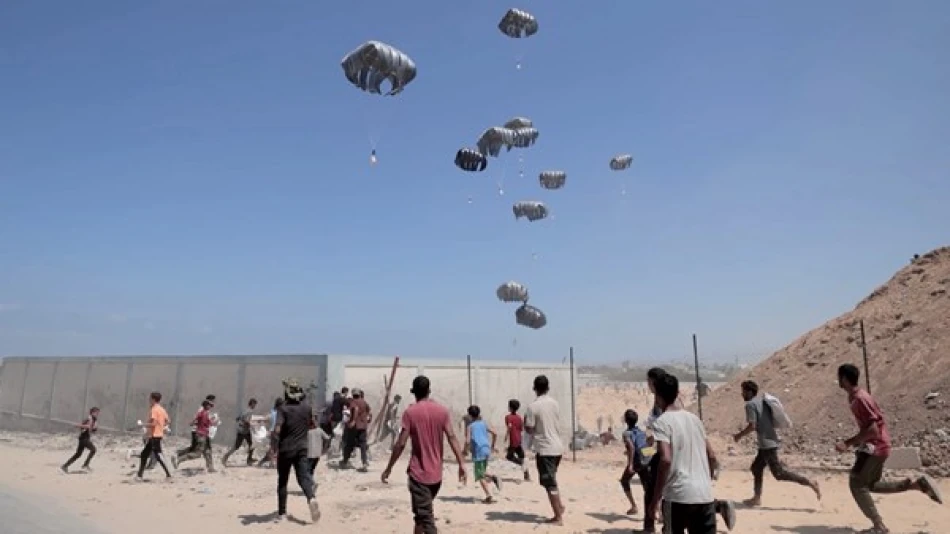
UAE Airlifts 78th Humanitarian Aid Shipment to Gaza, Providing Essential Supplies
UAE Delivers 78th Airdrop to Gaza as "Birds of Goodness" Operation Surpasses 4,000 Tons
The United Arab Emirates has completed its 78th humanitarian airdrop to Gaza as part of its sustained "Birds of Goodness" operation, marking a significant milestone in international relief efforts. With over 4,044 tons of aid delivered through aerial operations alone, the UAE's coordinated approach with Jordan, Germany, the Netherlands, and France demonstrates how Gulf states are leveraging diplomatic partnerships to navigate complex humanitarian crises.
Multilateral Coordination Sets New Standard for Crisis Response
The latest airdrop, conducted in partnership with Jordan and three European nations, underscores the UAE's strategy of building broad international coalitions for humanitarian missions. This approach mirrors the Emirates' broader foreign policy pivot toward multilateral engagement, similar to its coordination role in Yemen relief operations and Syrian refugee support over the past decade.
The operation's scale—78 separate airdrops totaling over 4,000 tons—represents one of the largest sustained humanitarian airlift campaigns in the region since the Berlin Airlift precedent. Unlike ad-hoc relief efforts, the "Birds of Goodness" initiative demonstrates systematic, long-term commitment that extends beyond symbolic gestures.
Strategic Implications for Regional Diplomacy
Gulf States as Humanitarian Powerhouses
The UAE's approach reflects a broader trend among Gulf Cooperation Council members to establish themselves as indispensable humanitarian actors. Similar to Saudi Arabia's $3 billion pledge to Yemen relief and Qatar's Gaza reconstruction commitments, the Emirates is positioning itself as a reliable partner for international organizations and Western governments seeking effective aid delivery mechanisms.
This humanitarian diplomacy serves multiple strategic purposes: it builds goodwill with European partners, demonstrates regional leadership, and creates channels for influence that transcend traditional political constraints.
Operational Innovation in Conflict Zones
The sustained nature of the operation—78 separate missions—indicates sophisticated logistical capabilities that few nations possess. The UAE has invested heavily in military transport aircraft and established air bridges that can operate in contested airspace, capabilities that prove valuable for both humanitarian and strategic purposes.
The involvement of Emirati charitable organizations in funding and organizing supplies also reflects the country's model of public-private partnership in foreign aid, where government logistics combine with private philanthropy to maximize impact.
Broader Context: Humanitarian Aid as Soft Power
The timing and scale of UAE's Gaza operations align with its broader strategy of using humanitarian assistance to maintain regional influence while avoiding direct political entanglement. This mirrors successful approaches by countries like Norway and Switzerland, which have built outsized international influence through consistent humanitarian leadership.
For international observers, the UAE's sustained commitment—evidenced by the progression from single airdrops to a numbered series reaching 78 operations—suggests this represents a long-term strategic initiative rather than crisis-driven aid. This consistency provides a model for how middle powers can contribute meaningfully to global humanitarian challenges while strengthening their diplomatic positioning.
 Layla Al Mansoori
Layla Al Mansoori







